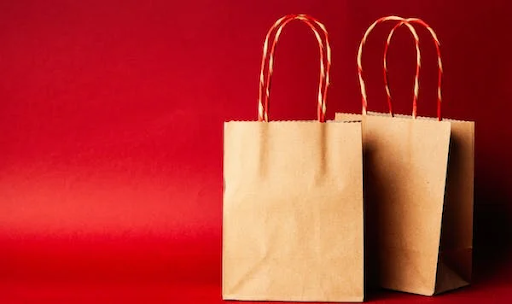Are you looking to reduce your carbon footprint? One great way to do this is by making the switch to sustainable packaging. Sustainable packaging can help protect both our environment and health, while reducing energy costs and waste.Â
In this article, we’ll discuss how to choose sustainable packaging so that it’s better for the planet as well as your bottom line.
Table of Contents
Benefits Of Sustainable Packaging
An astonishing 91% of plastic packaging is not recycled, meaning it ends up in landfills and waterways. This makes sustainable packaging a critical part of reducing our carbon footprint.Â
There are numerous benefits to using sustainable packaging that can make an immense difference for the environment.
- Reduces Harmful Emission
One major benefit to switching over to sustainable packaging is its ability to reduce harmful emissions from entering into the atmosphere.Â
By utilizing renewable sources such as bamboo or hemp fiber, we can create products with significantly less energy than those made with traditional plastics, resulting in fewer toxic fumes being released into the air.Â
Additionally, reusable materials like glass jars help eliminate waste by allowing consumers to return their containers instead of throwing them away after each use.
- Cost Savings
The other primary benefit of sustainable packaging is related to cost savings; eco-friendly options often have more economical production costs due to their reliance on natural resources instead of man-made ones.Â
Not only does this save money but also reduces the need for excess manufacturing which results in decreased amounts of pollution and greenhouse gas emissions.
 In addition, companies that opt for green alternatives may be eligible for tax incentives and subsidies, making these solutions even more attractive financially speaking.
Sustainable packaging offers several advantages beyond just environmental protection; it’s also beneficial from an economic standpoint too. Companies looking to decrease their ecological impact should consider investing in earth-friendly solutions before any other option available.
Types Of Sustainable Packaging Materials
Moving on from the advantages of sustainable packaging, let’s explore some of the different types of materials that can be used to help reduce your carbon footprint.
The first material to consider is cardboard and paper-based materials. Due to their low cost, these are a great option for reducing waste while still remaining economically viable.Â
Paper products such as corrugated cardboard boxes, tape made out of recycled paper, and biodegradable packing peanuts are all options you could use when looking for recyclable and renewable materials.
Another way to go green with shipping is using plastic alternatives like starch-based films or PLA (polylactic acid). These plastics are derived from plant oils and starches instead of petrochemicals, making them much more eco-friendly than traditional plastics while still providing an effective protective layer around your items during shipment.
Finally, there are also several organic packaging materials that make excellent environmentally friendly substitutes for plastic wrapping or bubble wrap.Â
Reusable bags made out of cotton or jute are perfect for protecting delicate items in transit without creating excess waste.Â
Additionally, hemp twine makes a great alternative to standard string – it’s strong yet lightweight and 100% compostable!
Here are five sustainable packaging materials that will help minimize your business’ impact on the environment:
- Corrugated Cardboard Boxes
- Tape Made Out Of Recycled Paper
- Biodegradable Packing Peanuts
- Starch-Based Films Or PLA
- Reusable Cotton/Jute Bags & Hemp Twine
These materials provide an affordable solution to minimizing environmental harm through reduced emissions and improved sustainability practices without sacrificing quality protection in transit.Â
Taking steps towards eliminating single-use plastics not only helps protect our planet but also shows customers that you care about doing the right thing.
How To Select And Source Sustainable Packaging Materials
When choosing packaging materials for your business, it’s important to select those that are sustainable and won’t have a negative impact on the environment.Â
The best way to do this is by looking at what type of material you can use, where it comes from and how much energy goes into producing it.
Firstly, consider the types of materials available. Paper-based products such as cardboard boxes or paper bags are often more sustainable than plastic ones because they’re easier to recycle and biodegrade quickly.Â
Look out for items made with recycled content too – these will help reduce your carbon footprint even further. If you must use plastic then opt for one which is recyclable so that any waste created can be reused in some way.
Secondly, when sourcing packaging materials look for companies who produce them sustainably. Many businesses now offer eco-friendly options including using renewable resources such as bamboo or hemp instead of traditional plastics.Â
Choosing suppliers who practice sustainability – either through their own production methods or through partnering with other eco-friendly organizations – helps ensure you’re reducing your company’s environmental impact without compromising quality.
It’s also wise to assess how much energy goes into creating each item before making a purchase decision – an alternative material may require less energy during manufacturing but still perform the same job effectively.Â
Making sure you research all available options carefully allows you to make informed decisions about which materials are most suitable for your needs while minimizing the amount of energy used during production.
Evaluating The Impact On Your Carbon Footprint
When choosing sustainable packaging, it’s essential to consider the total impact on your carbon footprint. You may have to weigh various considerations before making a decision that is both economical and environmentally friendly.Â
Start by assessing the overall life-cycle of the materials you are using for packaging. Consider how much energy was used in production, transportation, and disposal processes.
Next, take into account any additional factors such as recyclability or compostability of the material. Is there an end-of-life option available? How much energy will be saved if items can be reused instead of disposed of? Also consider whether nonrenewable resources were used in manufacturing and processing.Â
All these elements together should help you gauge the environmental impact of your chosen packaging solution.
Ultimately, investing in more sustainable options could potentially reduce your organization’s emissions significantly over time. It’s important to remember that no matter what choice you make, reducing waste is key when it comes to decreasing your company’s carbon footprint.Â
Taking steps towards sustainability now can ensure long term benefits for both your business and the environment.
Conclusion
Using sustainable packaging is a great way to reduce your carbon footprint and make an impact on the environment. It’s important to consider all of the different types, evaluate their potential impacts, and select materials that are best suited for your needs.Â
We’ve seen how much of a difference it can make – not only in terms of reducing our overall environmental impact but also by saving money in the long run. So let’s take this opportunity to be mindful about what we’re consuming and choose sustainable packaging whenever possible.
By doing so, we’ll be taking one giant leap towards a more sustainable future – like turning over a new leaf.

